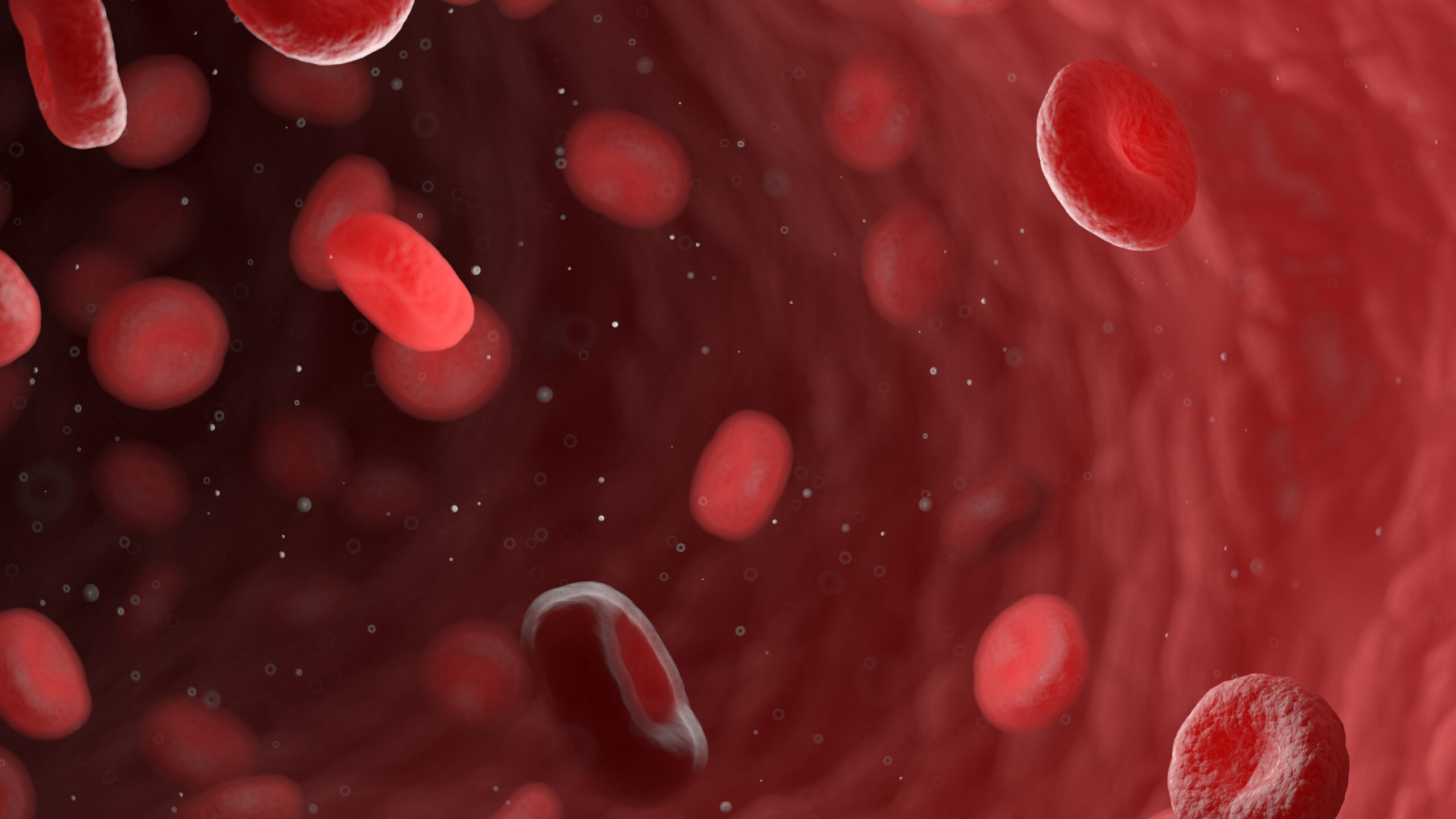What is hyperlipidemia?
Hyperlipidemia, also referred to as high cholesterol or dyslipidemia, is a medical condition characterized by elevated levels of lipids (fats) in the bloodstream. These lipids include cholesterol and triglycerides. Cholesterol is essential for various bodily functions, such as cell membrane structure, hormone production, and vitamin synthesis. However, excessively high cholesterol levels can be harmful and increase the risk of cardiovascular diseases, such as heart attack and stroke.
There are two main types of cholesterol: low-density lipoprotein (LDL) and high-density lipoprotein (HDL). LDL is often called “bad” cholesterol because it can contribute to plaque buildup in the arteries, leading to atherosclerosis. HDL is known as “good” cholesterol because it helps remove LDL from the bloodstream, lowering the risk of cardiovascular issues.
Hyperlipidemia can be caused by various factors, including genetics, poor diet, lack of exercise, obesity, smoking, and certain medical conditions or medications. Treatment for hyperlipidemia typically involves lifestyle modifications, such as a healthier diet, increased physical activity, weight loss, and smoking cessation. In some cases, medication may be prescribed to help lower lipid levels and reduce the risk of cardiovascular complications.
How does hyperlipidemia occur?
Hyperlipidemia occurs when there is an imbalance between the production and clearance of lipids (fats) in the bloodstream, leading to elevated levels of cholesterol and/or triglycerides. Several factors can contribute to the development of hyperlipidemia, including:
- Genetics: Some individuals have a genetic predisposition to hyperlipidemia due to inherited mutations or variations in specific genes. Familial hypercholesterolemia, for example, is an inherited condition that causes high levels of LDL cholesterol from birth.
- Diet: A diet high in saturated and trans fats, cholesterol, and simple carbohydrates can contribute to increased lipid levels in the bloodstream. Overconsumption of such foods can lead to higher production and lower clearance of lipids, resulting in hyperlipidemia.
- Sedentary lifestyle: Lack of physical activity can contribute to obesity and insulin resistance, both of which are risk factors for hyperlipidemia. Regular exercise can help increase HDL cholesterol levels and lower LDL cholesterol and triglyceride levels.
- Obesity: Excess body fat, particularly around the abdomen, can contribute to insulin resistance and elevated lipid levels. Losing weight can help improve lipid profiles and reduce the risk of hyperlipidemia.
- Smoking: Cigarette smoking can lower HDL cholesterol levels and increase the risk of hyperlipidemia and cardiovascular disease.
- Alcohol consumption: Excessive alcohol intake can lead to elevated triglyceride levels and contribute to hyperlipidemia.
- Medical conditions: Certain medical conditions, such as diabetes, hypothyroidism, kidney disease, and liver disease, can impact lipid metabolism and contribute to hyperlipidemia.
- Medications: Some medications, like corticosteroids, diuretics, and certain immunosuppressants, can affect lipid levels and increase the risk of hyperlipidemia.
A combination of these factors may be at play in an individual’s development of hyperlipidemia. Managing these risk factors through lifestyle modifications and, if necessary, medication can help prevent or control hyperlipidemia and reduce the risk of cardiovascular complications.
What’s the difference between HDL, LDL, and triglycerides?
HDL (high-density lipoprotein), LDL (low-density lipoprotein), and triglycerides are different types of lipids (fats) found in the bloodstream. They each have distinct functions and roles in the body:
- HDL (high-density lipoprotein): Often referred to as “good” cholesterol, HDL particles are responsible for transporting cholesterol from various parts of the body back to the liver for excretion or recycling. HDL helps to remove excess cholesterol from the bloodstream, including cholesterol that has accumulated in the arterial walls, thus reducing the risk of plaque formation and atherosclerosis. Higher levels of HDL are generally considered protective against cardiovascular diseases.
- LDL (low-density lipoprotein): Commonly known as “bad” cholesterol, LDL particles transport cholesterol from the liver to cells throughout the body, where it is used for various purposes, such as cell membrane structure and hormone production. However, when LDL cholesterol levels are too high, the excess cholesterol can accumulate in the arterial walls, leading to the formation of plaques and narrowing of the arteries, a condition known as atherosclerosis. This increases the risk of cardiovascular diseases, such as heart attack and stroke.
- Triglycerides: These are a type of fat that serves as an energy source for the body. Triglycerides are stored in fat cells and are released into the bloodstream when needed for energy. High triglyceride levels can be a risk factor for cardiovascular disease, especially when accompanied by low HDL cholesterol levels and other risk factors like obesity and insulin resistance. Elevated triglyceride levels are often associated with unhealthy diets, excessive alcohol consumption, and sedentary lifestyles.
In summary, HDL is considered protective against cardiovascular diseases due to its role in removing excess cholesterol from the bloodstream, while high LDL cholesterol and triglyceride levels can contribute to an increased risk of cardiovascular complications. Monitoring and managing these lipid levels through a healthy lifestyle and, if necessary, medication can help reduce the risk of cardiovascular events.
What symptoms does a patient experience with hyperlipidemia?
Hyperlipidemia is often referred to as a “silent” condition because it typically does not cause noticeable symptoms in its early stages. Most individuals with high cholesterol or elevated triglyceride levels are not aware of their condition until they undergo blood tests or develop complications related to hyperlipidemia, such as cardiovascular diseases.
In some rare cases, when lipid levels are extremely high, individuals may develop certain visible signs or symptoms:
- Xanthomas: These are fatty deposits that appear as yellowish, raised bumps on the skin, usually around the joints, tendons, or on the buttocks. They can also appear on the eyelids as xanthelasma, which are yellowish, flat plaques.
- Xanthelasma: As mentioned earlier, these are yellowish, flat plaques on the eyelids, and they may be an indication of elevated cholesterol levels.
- Arcus corneae: This is a gray or white opaque ring around the edge of the cornea, which can sometimes be an indication of high cholesterol levels, particularly in younger individuals.
- Pancreatitis: In cases where triglyceride levels are extremely high, individuals may develop acute pancreatitis, which presents with severe abdominal pain, nausea, and vomiting.
It is important to note that these symptoms are not common and most individuals with hyperlipidemia will not experience them. Regular checkups and blood tests are essential for early detection and management of elevated lipid levels to reduce the risk of cardiovascular complications.
How is hyperlipidemia diagnosed?
Hyperlipidemia is diagnosed through blood tests that measure the levels of various lipids, including cholesterol and triglycerides, in the bloodstream. A specific blood test called a lipid panel (also known as a lipid profile) is typically used for this purpose. The lipid panel measures the following:
- Total cholesterol: This is the sum of all cholesterol types in the blood, including HDL, LDL, and very-low-density lipoprotein (VLDL) cholesterol.
- HDL cholesterol: High-density lipoprotein cholesterol, often referred to as “good” cholesterol.
- LDL cholesterol: Low-density lipoprotein cholesterol, commonly known as “bad” cholesterol.
- Triglycerides: A type of fat that serves as an energy source for the body.
To obtain accurate results, patients are usually asked to fast for 9 to 12 hours before the blood test, as food consumption can temporarily affect lipid levels.
Based on the results of the lipid panel, healthcare providers can determine whether a patient has hyperlipidemia and assess their risk of developing cardiovascular diseases. The specific thresholds for diagnosing hyperlipidemia may vary depending on factors such as age, sex, and the presence of other risk factors for cardiovascular disease.
It is important to have regular check-ups and blood tests as part of routine health care, especially for individuals with a family history of high cholesterol, heart disease, or other risk factors. Early detection and appropriate management of hyperlipidemia can help reduce the risk of cardiovascular complications.
What is the treatment for hyperlipidemia?
The treatment for hyperlipidemia typically involves a combination of lifestyle modifications and, if necessary, medications to lower lipid levels and reduce the risk of cardiovascular complications. The specific treatment plan depends on the severity of the condition, the patient’s overall health, and the presence of other risk factors. Here are some common approaches to treating hyperlipidemia:
- Lifestyle modifications: These are often the first line of treatment and can significantly improve lipid levels in many individuals. Lifestyle modifications include:
- Dietary changes: Adopting a heart-healthy diet that is low in saturated and trans fats, cholesterol, and simple carbohydrates, while high in fiber, whole grains, fruits, vegetables, and healthy fats (such as those found in fish, nuts, and olive oil).
- Physical activity: Engaging in regular aerobic exercise, such as brisk walking, swimming, or cycling, for at least 150 minutes per week or 75 minutes of vigorous-intensity exercise.
- Weight management: Losing excess weight and maintaining a healthy weight can help improve lipid profiles and reduce the risk of cardiovascular disease.
- Smoking cessation: Quitting smoking can help increase HDL cholesterol levels and improve overall heart health.
- Medications: If lifestyle modifications alone are not sufficient to achieve target lipid levels or in cases where there is a high risk of cardiovascular disease, medications may be prescribed. Some common medications used to treat hyperlipidemia include:
- Statins: These are the most commonly prescribed medications for high cholesterol. They work by inhibiting an enzyme called HMG-CoA reductase, which is involved in cholesterol production in the liver. Statins can significantly lower LDL cholesterol and reduce the risk of cardiovascular events.
- Bile acid sequestrants: These medications work by binding to bile acids in the intestines, preventing their reabsorption and promoting the excretion of cholesterol in the feces.
- Fibrates: These drugs help lower triglyceride levels and can modestly increase HDL cholesterol. They are often used in patients with high triglyceride levels and/or low HDL cholesterol.
- Niacin (vitamin B3): This medication can help increase HDL cholesterol, lower LDL cholesterol, and reduce triglyceride levels. However, it may cause side effects such as flushing and liver problems, so its use has decreased in favor of other medications.
- PCSK9 inhibitors: These are newer injectable medications that work by increasing the clearance of LDL cholesterol from the bloodstream. They are typically used for patients with familial hypercholesterolemia or those who do not respond well to statins.
- Monitoring and follow-up: Regular follow-up appointments and blood tests are important to monitor the effectiveness of the treatment plan and make any necessary adjustments.
It is important to work closely with healthcare providers to develop an individualized treatment plan for hyperlipidemia, considering the patient’s overall health, risk factors, and any potential side effects or interactions of medications.
What are the typical outcomes for hyperlipidemia treatment?
The typical outcomes for hyperlipidemia treatment can vary depending on the individual’s adherence to the treatment plan, the severity of the condition, and the presence of other risk factors for cardiovascular disease. However, in many cases, effective treatment can lead to significant improvements in lipid levels and a reduction in the risk of cardiovascular complications.
- Improved lipid levels: With adherence to lifestyle modifications and, if necessary, medications, many individuals can achieve significant reductions in LDL cholesterol, increases in HDL cholesterol, and/or lowered triglyceride levels. The degree of improvement may vary from person to person, but these changes can contribute to better overall heart health.
- Reduced cardiovascular risk: Effective hyperlipidemia treatment can lead to a lower risk of developing atherosclerosis, heart attack, stroke, and other cardiovascular complications. The reduction in risk may be more pronounced in individuals with a higher baseline risk, such as those with a family history of heart disease or other risk factors.
- Need for ongoing management: Hyperlipidemia often requires long-term management and monitoring, as lipid levels may increase again if treatment is discontinued or lifestyle modifications are not maintained. Regular check-ups and blood tests are essential to ensure that lipid levels remain within target ranges and to make any necessary adjustments to the treatment plan.
- Individual variability: The outcomes of hyperlipidemia treatment can vary depending on factors such as genetics, age, sex, and the presence of other medical conditions or risk factors. Some individuals may respond more favorably to certain treatments than others, and it may take some trial and error to find the most effective treatment plan for each person.
Overall, the typical outcomes for hyperlipidemia treatment can be quite positive if individuals adhere to their prescribed treatment plans, maintain healthy lifestyles, and work closely with their healthcare providers to monitor their lipid levels and overall heart health.
What questions should I ask my doctor if I’m diagnosed with hyperlipidemia?
If you’re diagnosed with hyperlipidemia, it’s important to have a thorough discussion with your doctor to understand your condition, treatment options, and how to manage it effectively. Here are some questions you may want to ask:
- What are my specific lipid levels, and how do they compare to the recommended ranges?
- What is the likely cause of my hyperlipidemia? Is it primarily genetic, lifestyle-related, or due to an underlying medical condition?
- What are my individual risk factors for cardiovascular disease, and how does my lipid profile contribute to those risks?
- What lifestyle modifications do you recommend for managing my hyperlipidemia, such as dietary changes, exercise, and weight management?
- Will I need medication to manage my hyperlipidemia, and if so, which medication(s) do you recommend? What are the potential side effects and interactions of these medications?
- How often should I have my lipid levels checked to monitor my progress and the effectiveness of my treatment plan?
- If I’m prescribed medication, how soon can I expect to see improvements in my lipid levels, and how will we assess the effectiveness of the medication?
- Are there any specific signs or symptoms I should watch for that may indicate a worsening of my condition or the development of complications?
- How can I minimize the impact of other risk factors for cardiovascular disease, such as high blood pressure, diabetes, or smoking?
- Are there any support groups, educational resources, or other tools available to help me manage my hyperlipidemia and maintain a heart-healthy lifestyle?
Don’t hesitate to ask any additional questions or request clarification on any topics that you find unclear. Your healthcare provider is your partner in managing your hyperlipidemia, and it’s essential to maintain open communication and work together to develop an effective treatment plan tailored to your individual needs and circumstances.




